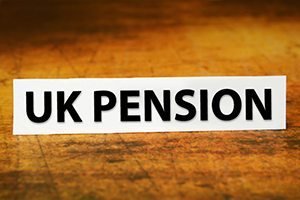 Pensions are never far from being in the financial headlines. We all know it’s something we need to be thinking about, but every time we try to read something about it, something more instantly interesting tends to crop up and we brush any thoughts of the future under the carpet for the time being. ‘It will keep’, we tell ourselves however, it is probably time to start paying attention.
Pensions are never far from being in the financial headlines. We all know it’s something we need to be thinking about, but every time we try to read something about it, something more instantly interesting tends to crop up and we brush any thoughts of the future under the carpet for the time being. ‘It will keep’, we tell ourselves however, it is probably time to start paying attention.
It’s easy to find your attention becoming diverted when terms such as ‘annuity’, ‘draw-down’, ‘pension pot’ and other industry jargon are thrown around with such regular gay abandon, wrongly assuming that we understand what these terms mean. We don’t know, but we need to know, so here we breakdown these made up words into something rather more palatable and easier for someone who isn’t a politician, stock broker or financier to understand:
Pension Pot
A pension pot is essential the overall amount you have saved into your pension scheme. How you use your pension pot is largely dependent on the type of pension you have. If you have an employer funded scheme you be able to use your pot for investments, if you have a personal pension scheme you may use it for investments and also the ability to draw-down a part of your pot while leaving the rest invested (see below).
Annuity
An annuity is a product which you pay into each month or year in order to receive payments later on down the line. An annuity is usually paid for from the pension pot. This means that a designated amount of the pension pot can be used to purchase an annuity to help increase the eventual size of the fund.
You pay in your money, you get a stream of payments when you retire. Annuities can be tailored to your own specifications for example, you could pay into a scheme which guarantees you will receive a set amount each month for a fixed period of time, or you can structure it so you get a continual payout until you die.
Regardless of the above, the money you pay in is invested. Depending on your appetite for risk, you could opt for a flexible annuity. This means you could see large returns if the investments go well, or you could see smaller payments if the funds have performed poorly.
The other option is to select a fixed annuity. This means that the amount you get back will be guaranteed, although will be less impressive than the possibilities offered by the flexible option. All investment is risky to a point, but often a fixed annuity will offer you no more interest than a premier bank account depending on when and where you take your annuity out.
Assets come in 4 classes and are what your money is invested in. Everybody should be aware of the types of assets available, they are:
- Equities
Equities or ‘shares’ as they are more commonly known, are essentially a part share a chosen company in return for a cash investment. If the company does well, its share price increase and those that have invested can benefit from the success by an increased share price. Usually equities are seen as being a more long term type of investment.
- Fixed Interest Securities
These are known to most of us as ‘bonds’, and bonds offer a more secure investment than that of equities. In essence a bond is a loan to a company or a government which gains interest during the period of repayment. Now, while the guarantee is there in terms of repayment, the returns are usually lower than those offered by equities.
- Commercial Property
Property is always viewed as a solid investment. Of course the market is largely dictated by opinion, but owning and renting out numerous properties has long been a method for many to make large sums of money.
- Cash
The last asset refers to the fact that some funds keep an amount of your money in cash. This does give flexibility and an amount of stability to your fund, however the potential returns are extremely low.
DRAW-DOWN
Draw-down is a term used to describe withdrawing money directly from your pension fund. Most pensions do not have this facility, however with the proposed changes to UK pensions in the 2014 Budget announcement, by 2015 many pension holders may be able to draw down up to 30% of their pension fund upon retirement.
LIFETIME ALLOWANCE
Lifetime Allowance simply refers to the maximum amount you are able to have in your pension fund before you start to pay tax on it. If you go over your lifetime allowance, you will pay 55% tax. The Lifetime Allowance for 2014/2015 is £1.25 million. If your pension is transferred into a QROPS, there is no Lifetime Allowance.

